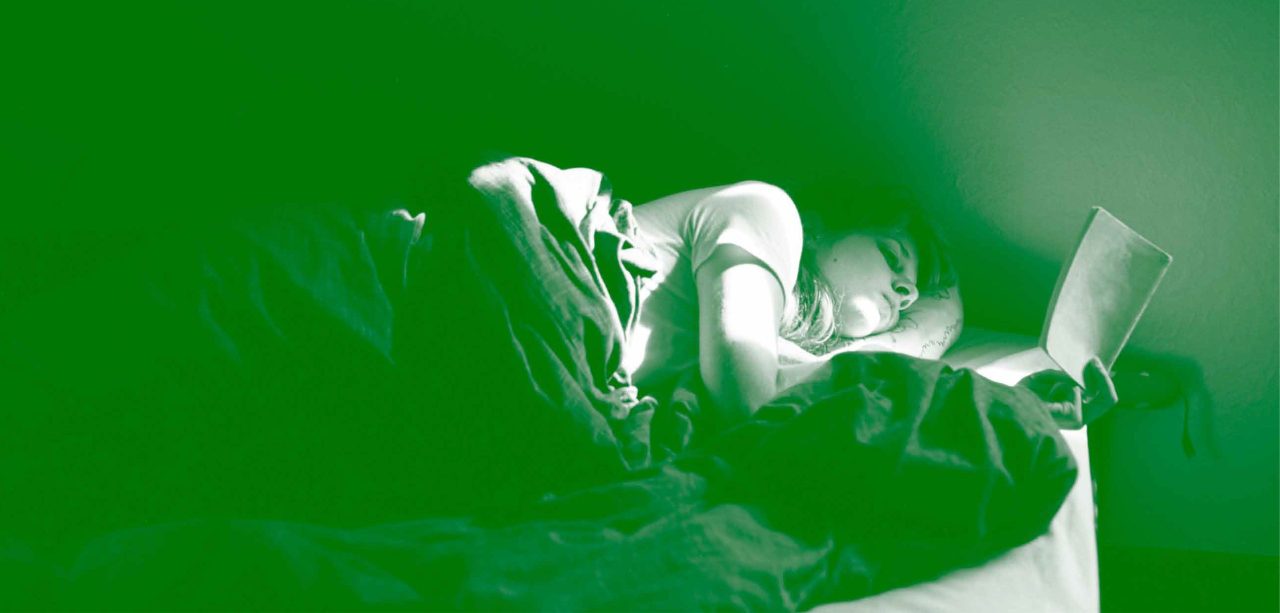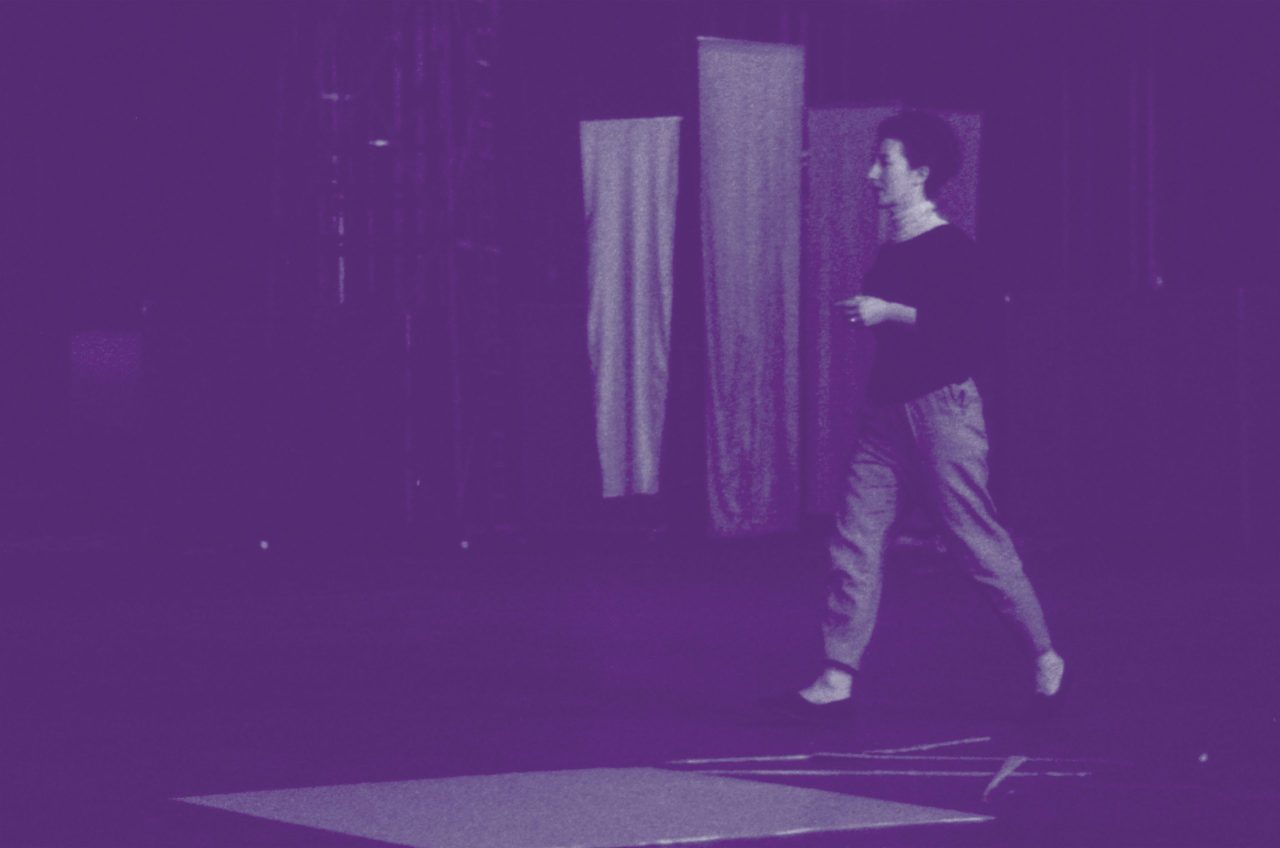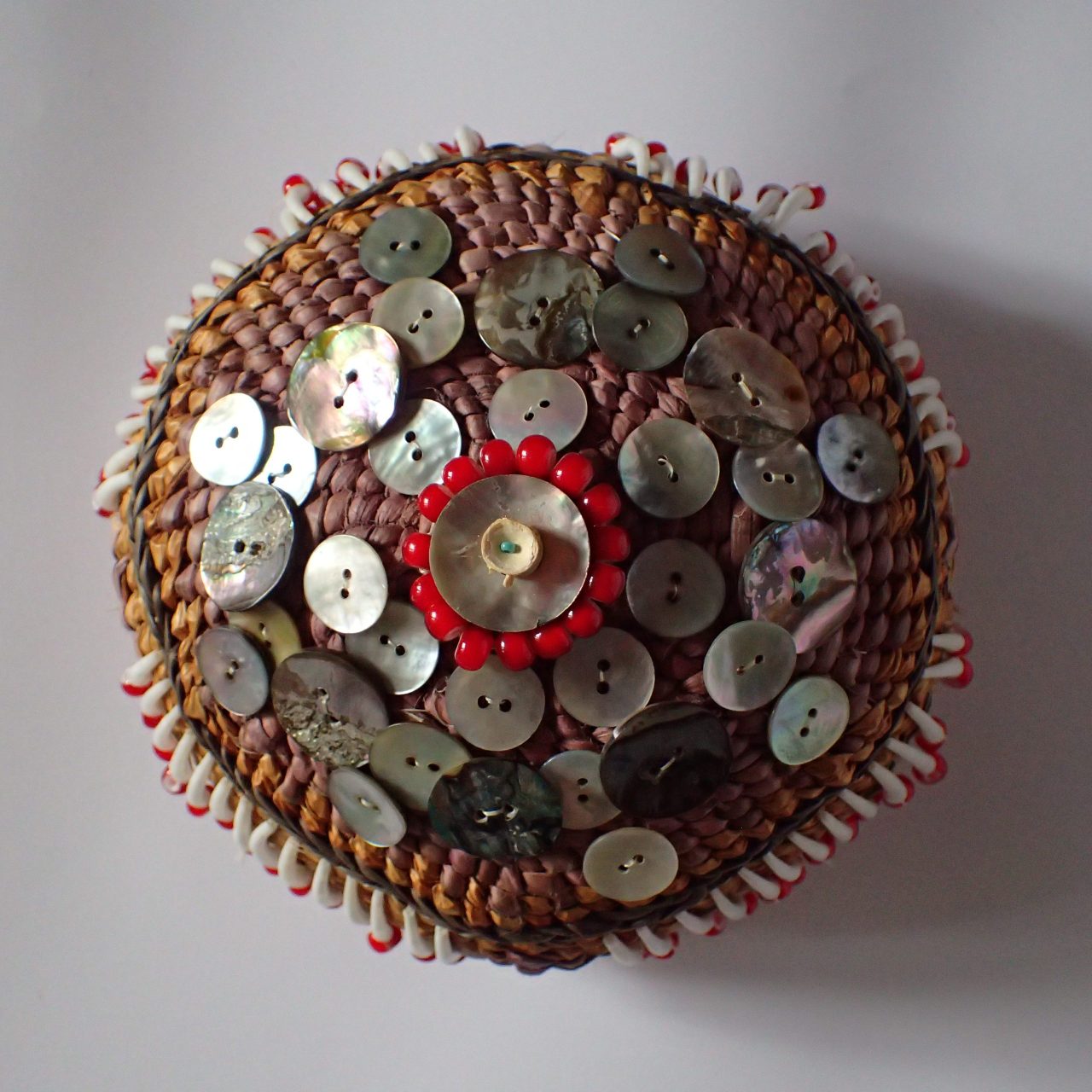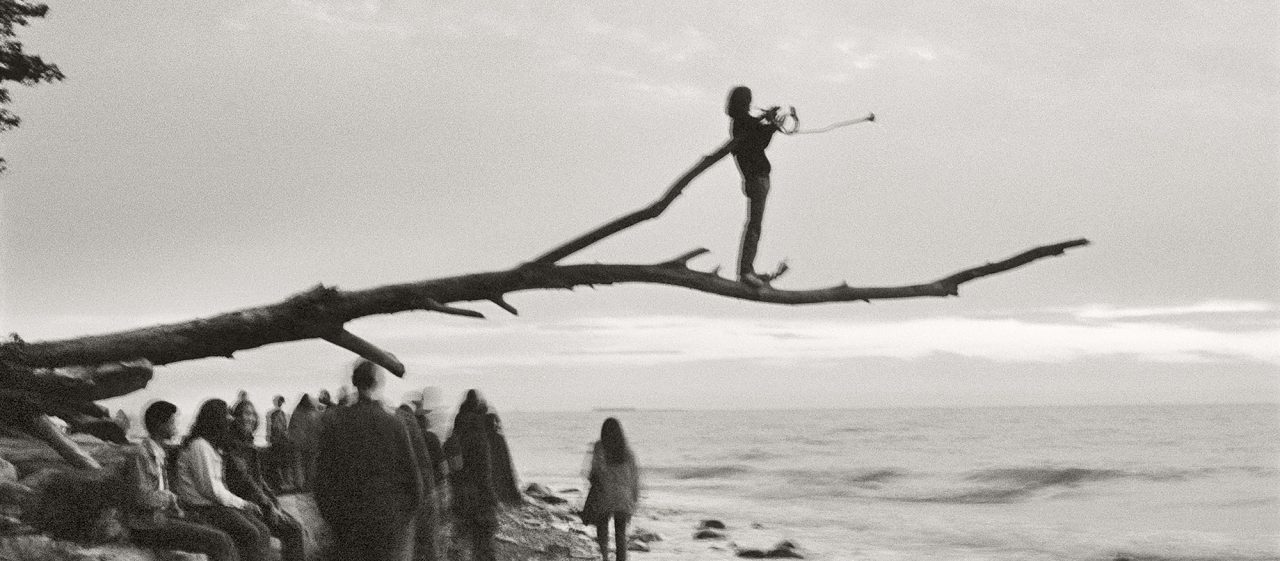28 Feb 2019 from 3-6 pm, Panel + Reception
Peter Wall Institute for Advanced Studies, 6331 Crescent Road, UBC
Symposium: Practices of Resistance
-
Teresa Montoya
Teresa Montoya (Diné) is a Provost’s Postdoctoral Fellow in the Department of Anthropology at the University of Chicago where she holds a position in Native American and Indigenous Studies. She earned a PhD in Anthropology from New York University where she also completed a filmmaking certificate in Culture and Media. She earned a B.A. in Interdisciplinary Humanities and Spanish from the University of San Diego and an M.A. in Museum Anthropology from the University of Denver. Her current manuscript project, Permeable: Diné Politics of Extraction and Exposure, approaches territorial dispossession and environmental toxicity as pervasive features of contemporary Indigenous life. Based on over 15 months of ethnographic research on the Navajo Nation, her research engages local modes of relating, both in its political and kinship imaginings, to understand the entanglements of checkerboard allotment, tribal jurisdiction, and regulatory failure among Diné communities of present-day northern Arizona and New Mexico. Themes of environmental contamination and settler colonialism interrogated in her writing are central to her ongoing media work in the mediums of photography and filmmaking. A curated selection of images from her current photographic projects are shared in this website. Her academic, political, and personal commitments are centered in Diné Bikéyah, the home that she carries with her and the home to which she always returns.
Read More
-
Marianne Nicolson
Marianne Nicolson (Kwakwa̱ka̱’wakw, Musga̱maḵw Dzawada̱’enux̱w First Nations, b. 1969) is an artist and activist of the Musga̱maḵw Dzawada̱’enux̱w Nations who are part of the Kwakwa̱ka̱’wakw (Kwak’wala speaking peoples) of the Northwest Coast. She is trained in both traditional Kwakwa̱ka̱’wakw forms and culture and contemporary gallery and museum-based practice. Her practice is multi-disciplinary, encompassing photography, painting, carving, video, installation, monumental public art, writing and speaking. She works as a Kwakwaka’wakw cultural researcher and historian, as well as an advocate for Indigenous land rights. She holds a BFA from the Emily Carr University of Art and Design (1996), an MFA (2000), MA in Linguistics and Anthropology (2005) and PhD in Linguistics and Anthropology with a focus on space as expressed in the Kwak’wala language (2013) all from the University of Victoria. Solo exhibitions include the Art Gallery of Greater Victoria (2008); Artspeak, Vancouver (2006); Esquimalt Municipal Hall (2004); Thunder Bay Art Gallery (2002); National Indian Art Centre, Hull (2001); Campbell River Public Art Gallery (2000) and Or Gallery, Vancouver (1992). Group exhibitions include the 17th Biennale of Sydney (2020); the Morris and Helen Belkin Art Gallery, Vancouver (2020); the Vancouver Art Gallery (2019-20); the National Gallery of Canada, Ottawa (2018-19) and the National Museum of the American Indian, New York (2017-19), among others. Major monumental public artworks are situated in her home territory of the Musga̱maḵw Dzawada̱’enux̱w First Nation, Vancouver International Airport, the Canadian Embassy in Amman, Jordan and the Canadian Embassy in Paris, France.
Following Nicolson’s Hexsa’a̱m: To Be Here Always, a 2019 project with the Belkin that functioned as research, material, media, testimony and ceremony to challenge the western concept that the power of art as limited to the symbolic, This Is An Emergency Broadcast (2023) is another moment to amplify Indigenous tradition.
Read More
-
Tania Willard
Tania Willard, of the Secwepemc Nation, works within the shifting ideas of contemporary and traditional as it relates to cultural arts and production. Often working with bodies of knowledge and skills that are conceptually linked to her interest in intersections between Aboriginal and other cultures. Willard has worked as a curator in residence with grunt gallery and Kamloops Art Gallery. Willard’s curatorial work includes Beat Nation: Art Hip Hop and Aboriginal Culture, a national touring exhibition first presented at Vancouver Art Gallery in 2011, Unceded Territories: Lawrence Paul Yuxweluptun at the Museum of Anthropology co-curated by Karen Duffek in 2016, and CUSTOM MADEat Kamloops Art Gallery. She has also been selected as one of 5 National curators for a National scope exhibition in collaboration with Partners in Art and National Parks. Willard’s personal curatorial projects include BUSH gallery, a conceptual space for land based art and action led by Indigenous artists.
Read More
-
cheyanne turions
Respondentcheyanne turions is a curator, cultural worker and writer concerned with art’s capacity to provoke otherwise possibilities. Currently, turions is the Curator at SFU Galleries and on the Board of Directors at 221A.
Read More
-
Shelly Rosenblum
Shelly Rosenblum is Curator of Academic Programs at the Belkin. Inaugurating this position at the Belkin, Rosenblum’s role is to develop programs that increase myriad forms of civic and academic engagement at UBC, the wider Vancouver community and beyond. Rosenblum received her PhD at Brown University and has taught at Brown, Wesleyan and UBC. Her awards include fellowships from the Center for the Humanities, Wesleyan University and a multi-year Presidential Postdoctoral Research Fellowship, Department of English, UBC. She was selected for the Summer Leadership Institute of the Association of Academic Museums and Galleries at the Kellogg School of Management, Northwestern University (2014). Her research interests include issues in contemporary art and museum theory, discourses of the Black Atlantic, critical theory, narrative and performativity. Her teaching covers the 17th to the 21st centuries. She remains active in professional associations related to academic museums and cultural studies, attending international conferences and workshops, and recently completing two terms (six years) on the Board of Directors at the Western Front, Vancouver, including serving as Board President. At UBC, Rosenblum is an Affiliate of the Peter Wall Institute for Advanced Studies.
Read More
Hexsa’a̱m: To Be Here Always brings together new works by Indigenous artists who make work addressing the threats posed by Canadian colonial capitalism to their land, water and ecologies. Symposium speakers Teresa Montoya, Marianne Nicolson and Tania Willard will address issues raised by the continuing struggles for Indigenous sovereignty and strategies for art practiced as part of their communities’ resistance against settler colonialism and ecological destruction. All three will be speaking from their experience as artists, activists and researchers whose practices are inextricably linked to the political and cultural life of their communities. cheyanne turions will be responding to the three speakers’ contributions.
This symposium is organized in dialogue with Critical Nationalisms and Counterpublics, a conference addressing the necessity and status of the “nation” as a category of belonging, the perils of new nationalisms, and the promise of the counterpublics that have arisen in response to rightward turns in political governance. Organized by Dina Al-Kassim, Karyn Ball, Larissa Lai and Madeleine Reddon with keynote lectures by Andrew Parker, Kavita Phillip and David Palumbo-Liu. Critical Nationalisms and Counterpublics takes place on March 1 and 2, 2019 at SFU Harbour Centre; for details, visit cncpcom.wordpress.com.
Teresa Montoya (Diné) is a Provost’s Postdoctoral Fellow in the Department of Anthropology at the University of Chicago where she holds a position in Native American and Indigenous Studies. She earned a PhD in Anthropology from New York University where she also completed a filmmaking certificate in Culture and Media. Her research and media production focuses on legacies of settler colonialism and environmental contamination in relation to contemporary issues of tribal jurisdiction and sovereign action within and beyond the Navajo Nation.
Marianne Nicolson (‘Tayagila’ogwa) is an artist of Scottish and Dzawada̱’enux̱w First Nations descent. The Dzwada̱’enux̱w People are a member tribe of the Kwakwa̱ka̱’wakw Nations of the Pacific Northwest Coast. Her training encompasses both traditional Kwakwa̱ka̱’wakw forms and culture and Western European based art practice. She has completed a Bachelor of Fine Arts from Emily Carr University of Art and Design (1996), a Masters in Fine Arts (1999), a Masters in Linguistics and Anthropology (2005) and a PhD in Linguistics, Anthropology and Art History (2013) at the University of Victoria. She has exhibited her artwork locally, nationally and internationally as a painter, photographer and installation artist, has written and published numerous essays and articles, and has participated in multiple speaking engagements. Her practice engages with issues of Aboriginal histories and politics arising from a passionate involvement in cultural revitalization and sustainability.
Tania Willard, of the Secwépemc Nation, works within the shifting ideas of contemporary and traditional as it relates to cultural arts and production. Often working with bodies of knowledge and skills that are conceptually linked to her interest in intersections between Aboriginal and other cultures. Willard has worked as a curator in residence with grunt gallery and Kamloops Art Gallery. Willard’s curatorial work includes Beat Nation: Art Hip Hop and Aboriginal Culture, a national touring exhibition first presented at Vancouver Art Gallery in 2011, Unceded Territories: Lawrence Paul Yuxweluptun at the Museum of Anthropology co-curated by Karen Duffek in 2016, and CUSTOM MADE at Kamloops Art Gallery. She has also been selected as one of 5 National curators for a National scope exhibition in collaboration with Partners in Art and National Parks. Willard’s personal curatorial projects include BUSH gallery, a conceptual space for land based art and action led by Indigenous artists.
cheyanne turions is a curator, cultural worker and writer concerned with art’s capacity to provoke otherwise possibilities. Currently, turions is the Curator at SFU Galleries and on the Board of Directors at 221A. She will participate as a Respondent.
Image (above): Marianne Nicolson, La’am ‘lawisuxw Yaxuxsan’s ‘Nalax -Then the Deluge of Our World Came (detail), 2017, acrylic, mother of pearl, and brass on wood, 152.4 x 487.7 cm. Courtesy of the artist.
Conceived and developed by Shelly Rosenblum
-
Teresa Montoya
Teresa Montoya (Diné) is a Provost’s Postdoctoral Fellow in the Department of Anthropology at the University of Chicago where she holds a position in Native American and Indigenous Studies. She earned a PhD in Anthropology from New York University where she also completed a filmmaking certificate in Culture and Media. She earned a B.A. in Interdisciplinary Humanities and Spanish from the University of San Diego and an M.A. in Museum Anthropology from the University of Denver. Her current manuscript project, Permeable: Diné Politics of Extraction and Exposure, approaches territorial dispossession and environmental toxicity as pervasive features of contemporary Indigenous life. Based on over 15 months of ethnographic research on the Navajo Nation, her research engages local modes of relating, both in its political and kinship imaginings, to understand the entanglements of checkerboard allotment, tribal jurisdiction, and regulatory failure among Diné communities of present-day northern Arizona and New Mexico. Themes of environmental contamination and settler colonialism interrogated in her writing are central to her ongoing media work in the mediums of photography and filmmaking. A curated selection of images from her current photographic projects are shared in this website. Her academic, political, and personal commitments are centered in Diné Bikéyah, the home that she carries with her and the home to which she always returns.
Read More
-
Marianne Nicolson
Marianne Nicolson (Kwakwa̱ka̱’wakw, Musga̱maḵw Dzawada̱’enux̱w First Nations, b. 1969) is an artist and activist of the Musga̱maḵw Dzawada̱’enux̱w Nations who are part of the Kwakwa̱ka̱’wakw (Kwak’wala speaking peoples) of the Northwest Coast. She is trained in both traditional Kwakwa̱ka̱’wakw forms and culture and contemporary gallery and museum-based practice. Her practice is multi-disciplinary, encompassing photography, painting, carving, video, installation, monumental public art, writing and speaking. She works as a Kwakwaka’wakw cultural researcher and historian, as well as an advocate for Indigenous land rights. She holds a BFA from the Emily Carr University of Art and Design (1996), an MFA (2000), MA in Linguistics and Anthropology (2005) and PhD in Linguistics and Anthropology with a focus on space as expressed in the Kwak’wala language (2013) all from the University of Victoria. Solo exhibitions include the Art Gallery of Greater Victoria (2008); Artspeak, Vancouver (2006); Esquimalt Municipal Hall (2004); Thunder Bay Art Gallery (2002); National Indian Art Centre, Hull (2001); Campbell River Public Art Gallery (2000) and Or Gallery, Vancouver (1992). Group exhibitions include the 17th Biennale of Sydney (2020); the Morris and Helen Belkin Art Gallery, Vancouver (2020); the Vancouver Art Gallery (2019-20); the National Gallery of Canada, Ottawa (2018-19) and the National Museum of the American Indian, New York (2017-19), among others. Major monumental public artworks are situated in her home territory of the Musga̱maḵw Dzawada̱’enux̱w First Nation, Vancouver International Airport, the Canadian Embassy in Amman, Jordan and the Canadian Embassy in Paris, France.
Following Nicolson’s Hexsa’a̱m: To Be Here Always, a 2019 project with the Belkin that functioned as research, material, media, testimony and ceremony to challenge the western concept that the power of art as limited to the symbolic, This Is An Emergency Broadcast (2023) is another moment to amplify Indigenous tradition.
Read More
-
Tania Willard
Tania Willard, of the Secwepemc Nation, works within the shifting ideas of contemporary and traditional as it relates to cultural arts and production. Often working with bodies of knowledge and skills that are conceptually linked to her interest in intersections between Aboriginal and other cultures. Willard has worked as a curator in residence with grunt gallery and Kamloops Art Gallery. Willard’s curatorial work includes Beat Nation: Art Hip Hop and Aboriginal Culture, a national touring exhibition first presented at Vancouver Art Gallery in 2011, Unceded Territories: Lawrence Paul Yuxweluptun at the Museum of Anthropology co-curated by Karen Duffek in 2016, and CUSTOM MADEat Kamloops Art Gallery. She has also been selected as one of 5 National curators for a National scope exhibition in collaboration with Partners in Art and National Parks. Willard’s personal curatorial projects include BUSH gallery, a conceptual space for land based art and action led by Indigenous artists.
Read More
-
cheyanne turions
Respondentcheyanne turions is a curator, cultural worker and writer concerned with art’s capacity to provoke otherwise possibilities. Currently, turions is the Curator at SFU Galleries and on the Board of Directors at 221A.
Read More
-
Shelly Rosenblum
Shelly Rosenblum is Curator of Academic Programs at the Belkin. Inaugurating this position at the Belkin, Rosenblum’s role is to develop programs that increase myriad forms of civic and academic engagement at UBC, the wider Vancouver community and beyond. Rosenblum received her PhD at Brown University and has taught at Brown, Wesleyan and UBC. Her awards include fellowships from the Center for the Humanities, Wesleyan University and a multi-year Presidential Postdoctoral Research Fellowship, Department of English, UBC. She was selected for the Summer Leadership Institute of the Association of Academic Museums and Galleries at the Kellogg School of Management, Northwestern University (2014). Her research interests include issues in contemporary art and museum theory, discourses of the Black Atlantic, critical theory, narrative and performativity. Her teaching covers the 17th to the 21st centuries. She remains active in professional associations related to academic museums and cultural studies, attending international conferences and workshops, and recently completing two terms (six years) on the Board of Directors at the Western Front, Vancouver, including serving as Board President. At UBC, Rosenblum is an Affiliate of the Peter Wall Institute for Advanced Studies.
Read More
Related
-
Exhibition
4 September 2018 – 2 December 2018
Beginning with the Seventies: Collective Acts

Collective Acts taps into the generative potential of archival research by artists into experiments with collective organizing and cooperative production, presenting new work by Dana Claxton, Jeneen Frei Njootli and the ReMatriate Collective, Christine D’Onofrio and Heather Kai Smith, alongside work by Salish Weavers Guild members Mary Peters, Adeline Lorenzetto and Annabel Stewart. Beginning with the Seventies: Collective Acts is curated by Lorna Brown and is the third of four exhibitions based upon the Belkin Art Gallery’s research project investigating the 1970s, an era when social movements of all kinds – feminism, environmentalism, LGBTQ rights, Indigenous rights, access to health services and housing – began to coalesce into models of self-organization that overlapped with the production of art and culture. Noting the resurgence of art practice involved with social activism and an increasing interest in the 1970s from younger producers, the Belkin has connected with diverse archives and activist networks to bring forward these histories, to commission new works of art and writing and to provide a space for discussion and debate.
[more] -
Exhibition
12 January 2018 – 8 April 2018
Beginning with the Seventies: GLUT

Celebrating the excessive abundance of the archive, Beginning with the Seventies: GLUT is concerned with language, depictions of the woman reader as an artistic genre and the potential of reading as performed resistance.
[more] -
Exhibition
22 June 2018 – 12 August 2018
Beginning with the Seventies: Radial Change

How is an archive formed? Memories of performance often exceed the containment of the document, whether photography, film, prop or testimony. As communities disperse and regroup over time, figures may slip away from the centre. Circling around the embodied archive, the exhibition Radial Change is drawn from the title of a dance work by Helen Goodwin. The elusive histories of Goodwin’s choreography and her influence on the interdisciplinary art scene of the 1970s are explored in new installation works by Evann Siebens and by Michael de Courcy.
[more] -
Event
3 Apr 2019; 2 pm
Concert at the Belkin: Hexsa’a̱m

Once again, we are pleased to welcome the UBC Contemporary Players to the Belkin Art Gallery for a concert inspired by the exhibition Hexsa’a̱m: To Be Here Always. Led by Director Paolo Bortolussi, this graduate and undergraduate student ensemble from the UBC School of Music will animate the Gallery for an afternoon program celebrating themes from the exhibition. The program will feature an original composition by Leslie Opatril who worked closely with artists Marianne Nicolson and Althea Thauberger. Opatril is a Master's student at the UBC School of Music working under the supervision of Dorothy Chang.
Admission is free. [more] -
Event
Fri 6 March 2020 at 5 pm
Sat 7 March 2020 at 1 pm
Book Launch and Symposium: Beginning with the Seventies

Please join us for a book launch and series of attendant events - readings, discussions, lectures - to celebrate the publication of our Beginning with the Seventies project. The program will take place on Friday, March 6 at the Musqueam Cultural Centre and Saturday, March 7 at the University Centre. Presenters include Lorna Brown, Lisa Darms, Thea Quiray Tagle, Kate Hennessy, Sarah Hunt, Yaniya Lee, Jaqueline Mabey, Allyson Mitchell and Lisa Robertson.
[more]